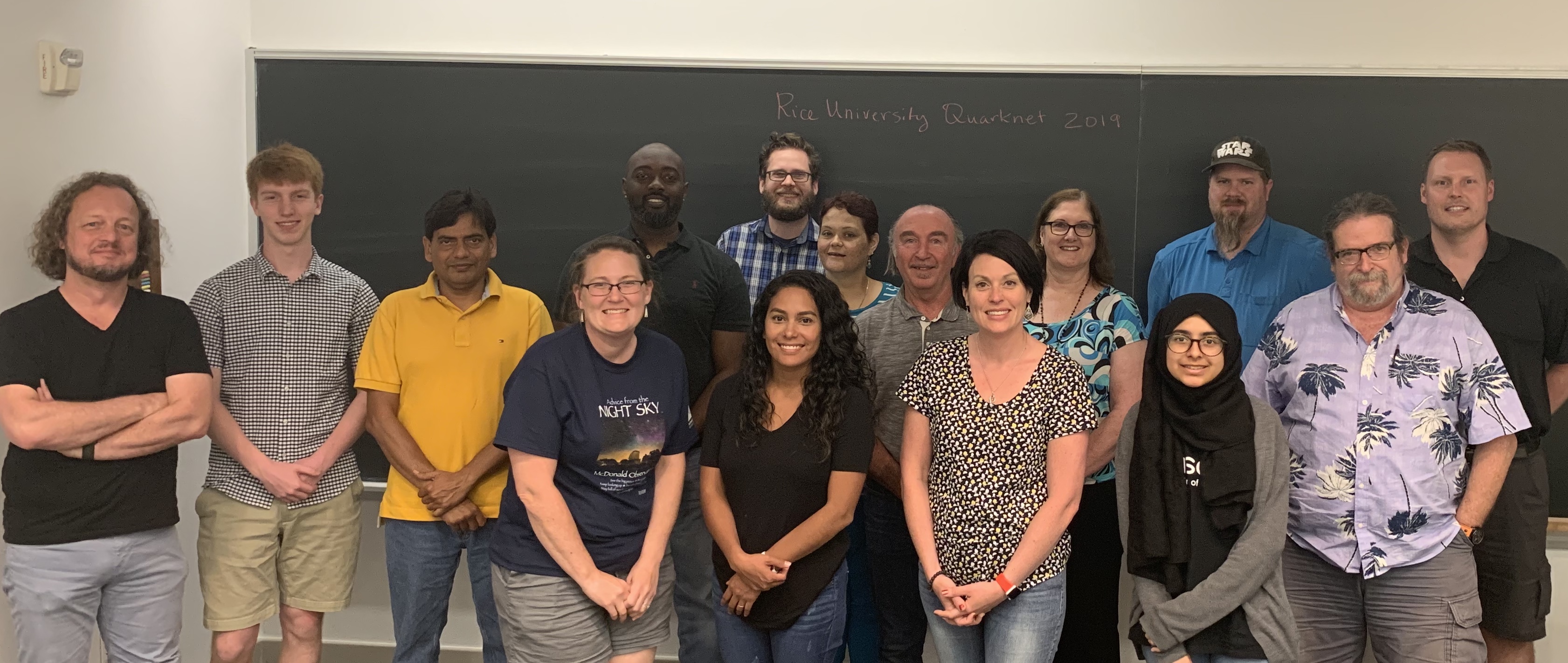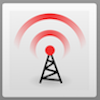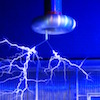Friday Flyer - February 28, 2020

Spotlight on the Rice University/University of Houston QuarkNet Center
This center had a very busy 2019, starting right away in January with the AAPT meeting in Houston. Mentor Frank Guerts joined QuarkNet staff in leading half-day particle physics workshops for students at Bellaire High School and KIPP Northeast College Preparatory School in Houston on the Friday before AAPT. This outreach effort has now become an annual event, with QuarkNet partnering with the AAPT Committee on Contemporary Physics to do such workshops at high schools near the winter meeting location.
Twenty students and four teachers joined the CMS masterclass hosted at Rice on March 23, more than tripling the participation compared with previous years. In June, 12 teachers gathered for five days at Rice for a workshop that focused on the CMS e-Lab, cosmic ray detectors, and the use of classroom demonstrations, including cloud chambers. During this workshop, teachers toured a lab where ultra-cold atoms and plasmas are studied and attended daily talks with Rice and UH faculty on topics such as heavy-ion physics at the LHC, dark matter physics, and space physics. To top it all off, two teachers attended Data Camp at Fermilab and one attended a summer program at CERN in 2019.


News from QuarkNet Central
If your group is not yet registered for International Masterclasses, please contact Ken as soon as possible. Check the videoconference schedule. The latest IMC circular is out today with information on running a masterclass offline and with an update on the impacts of COVID-19 on masterclasses.
There is still time for teams to put together proposals for Beamline for Schools (BL4S). Check out the BL4S notice from CERN on Twitter.

Physics Experiment Roundup
If you think cameras that capture thousands of frames each second are fast, check out this new detector being devised by CMS physicists that will effectively take 30 billion snapshots a second. And now we transition from the extremely fast to the extremely large; read about IceCube, the neutrino detector that largely consists of a giant ice cube (as the name implies), weighing in at around a billion tons and occupying around one billion cubic meters.

Resources
From symmetry, read about seven LHC scientists at different points on the academic career ladder: from undergraduate student to experiment spokesperson.
From The Conversation, a podcast about dark energy. From SciTechDaily, building a 3D map of the universe to learn more about dark energy. And from MinutePhysics, how kaon decay can help us differentiate between matter from antimatter.
Lastly, a few examples of some benefits of particle physics research that you may not have considered: preventing financial fraud, treating irregular heartbeat, and building quantum computers.

Just for Fun
A few recent images from Twitter you may enjoy: An interesting view of Wilson Hall at Fermilab, DUNE preparation work at Sanford Underground Lab, cosmic ray collisions at the RHIC, and a really cool moonset from space.
And finally...from xkcd (because this is the FF, where we love xkcd): enough said.
QuarkNet Staff:
Mark Adams: adams@fnal.gov
Ken Cecire: kcecire@nd.edu
Spencer Pasero: spasero@fnal.gov
Shane Wood: swood5@nd.edu
